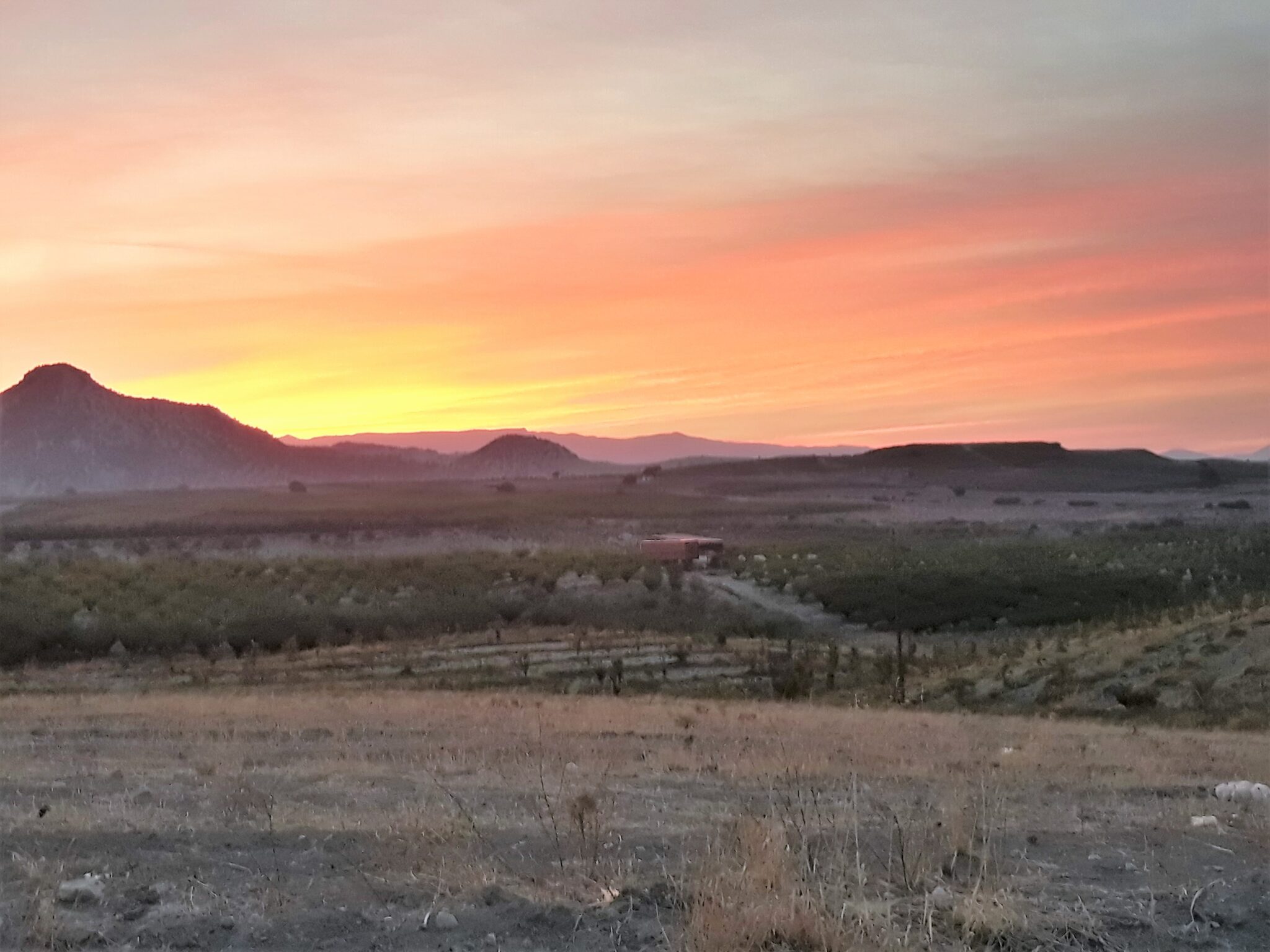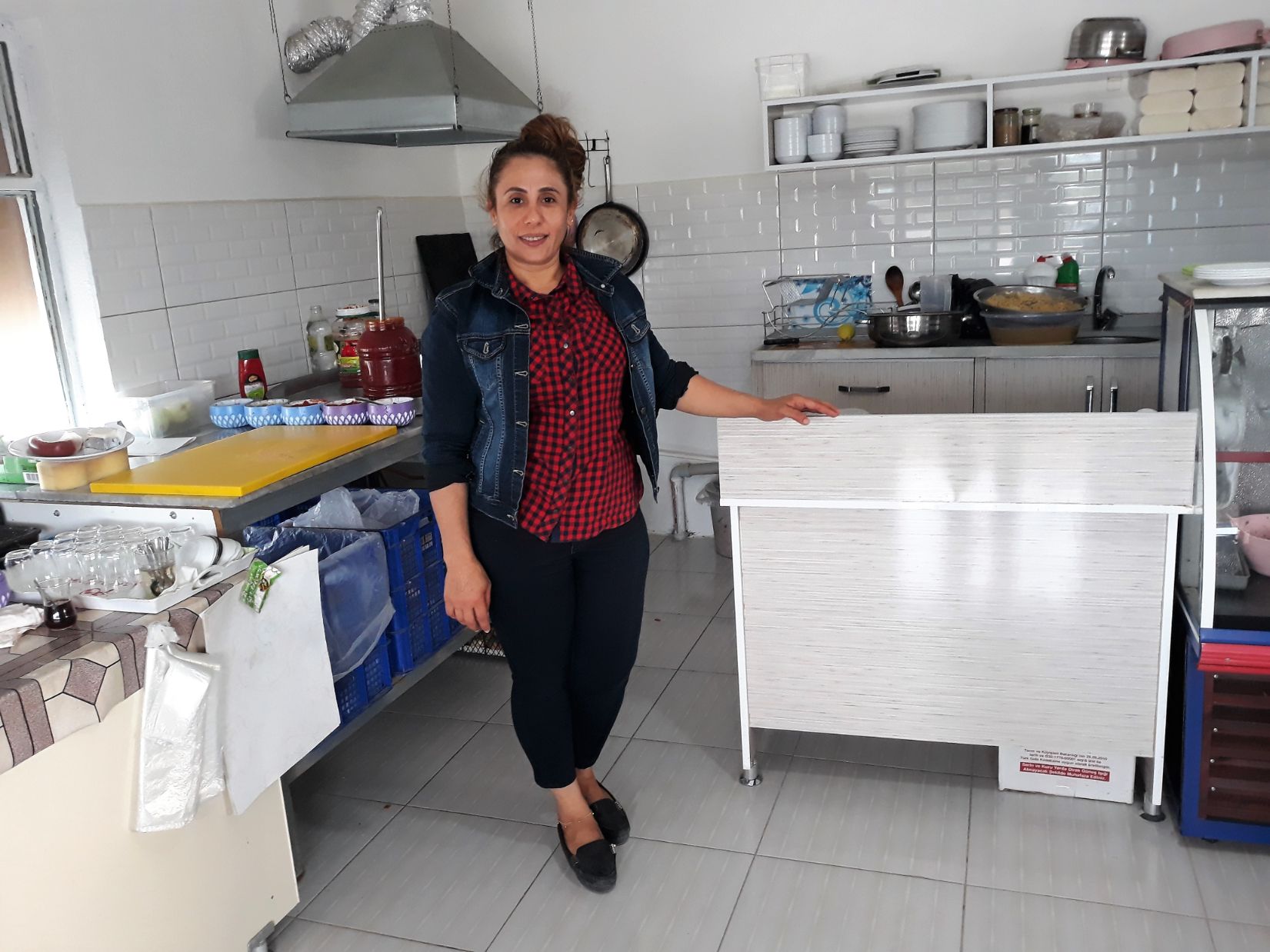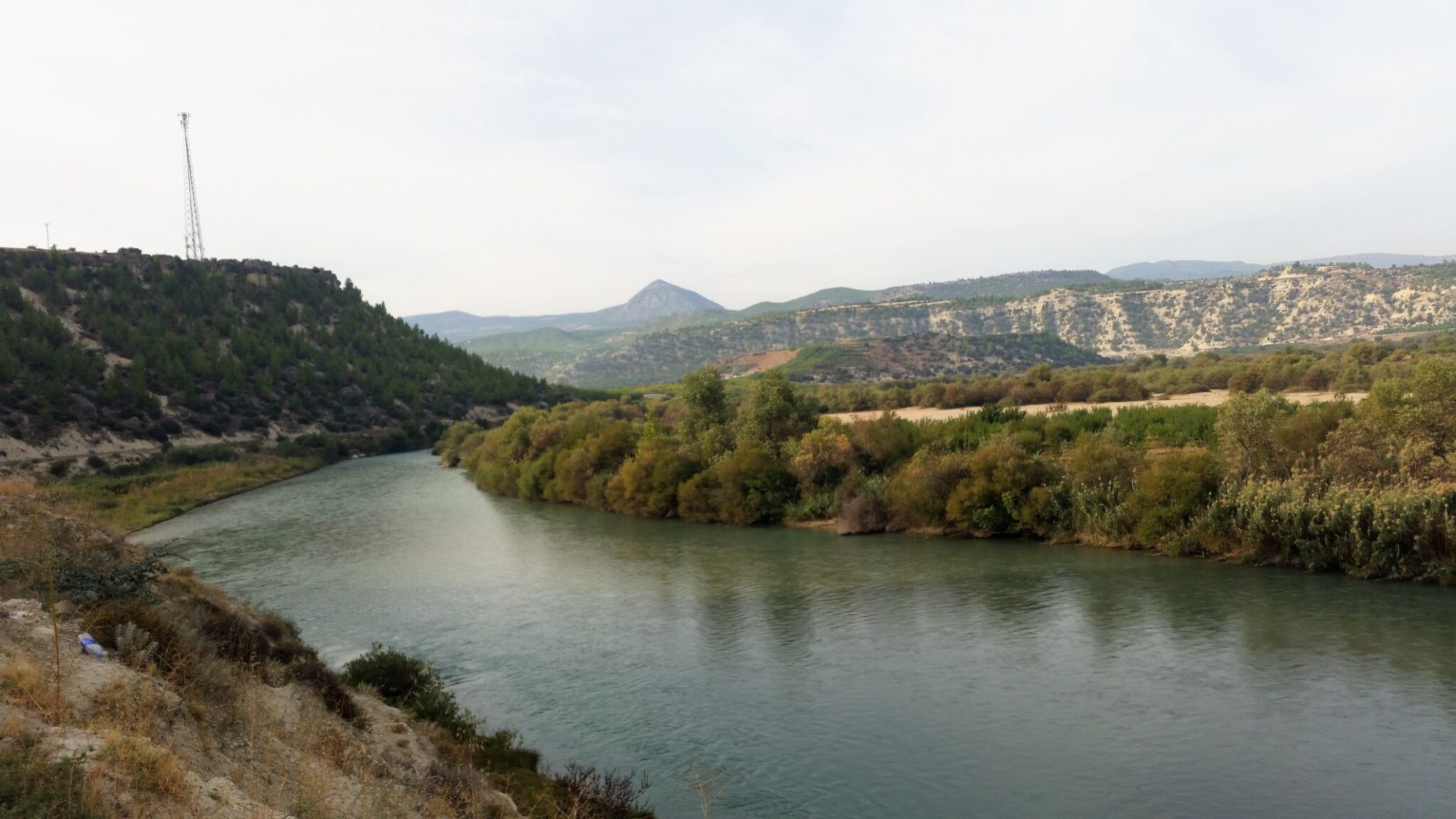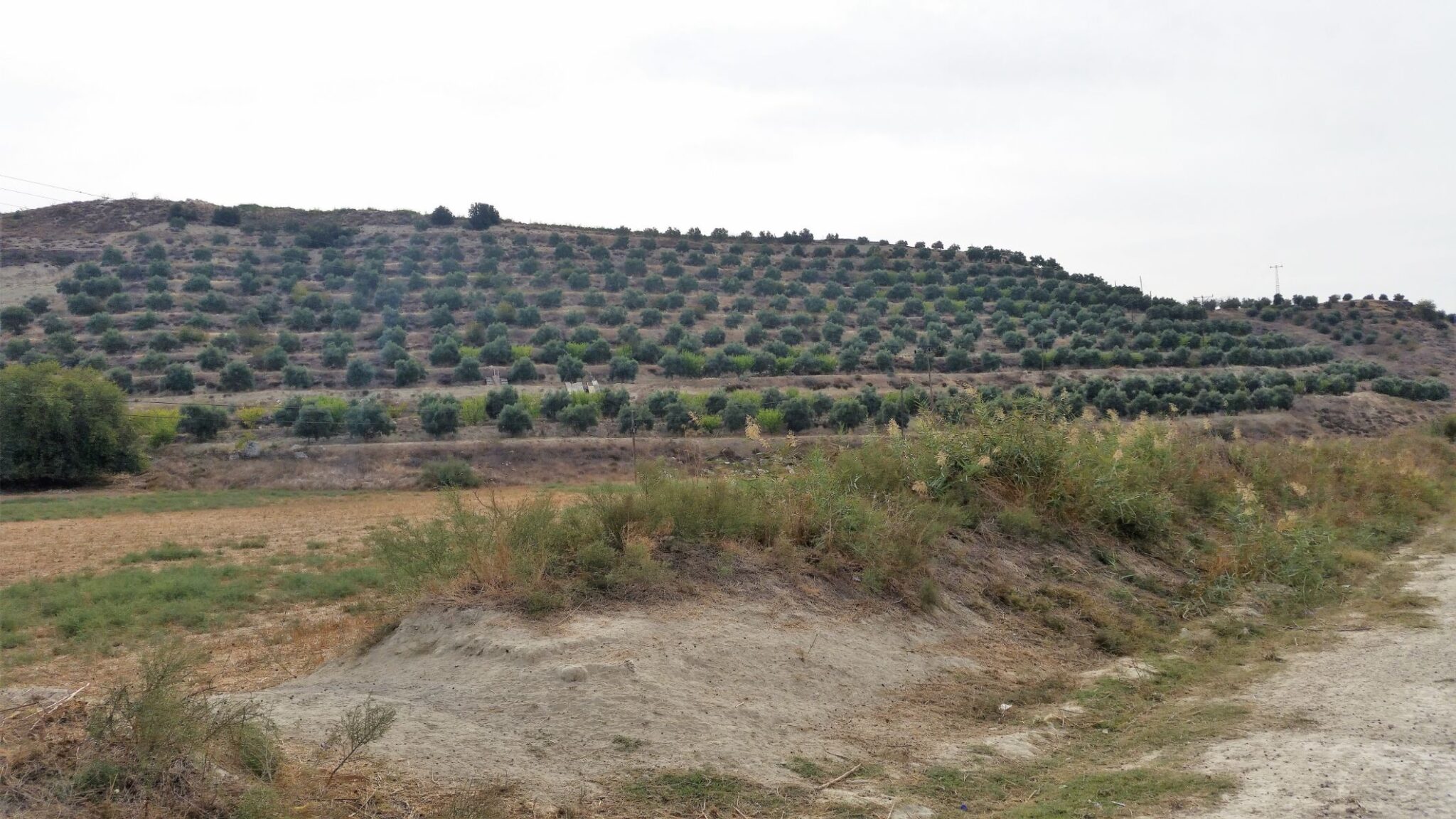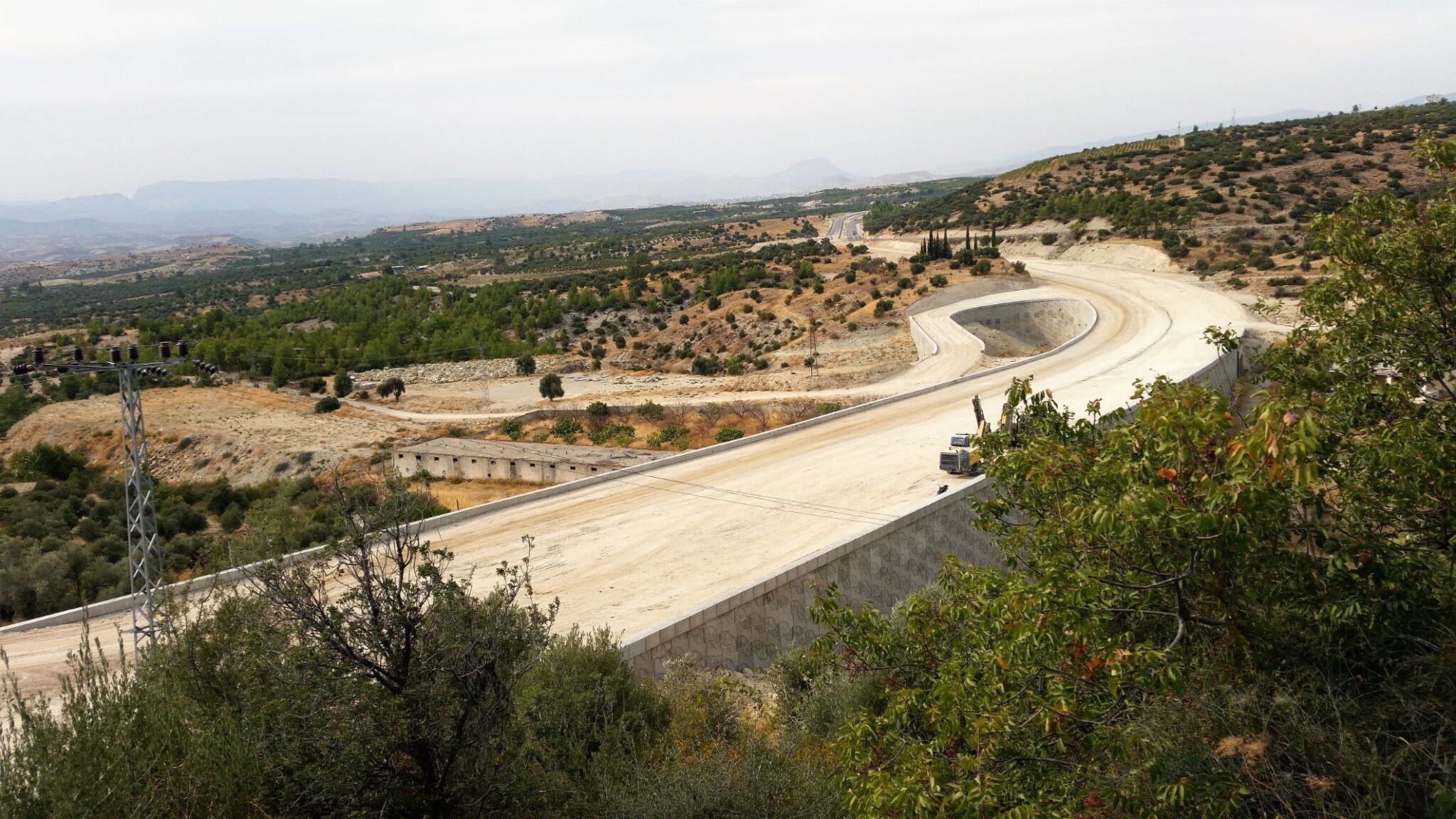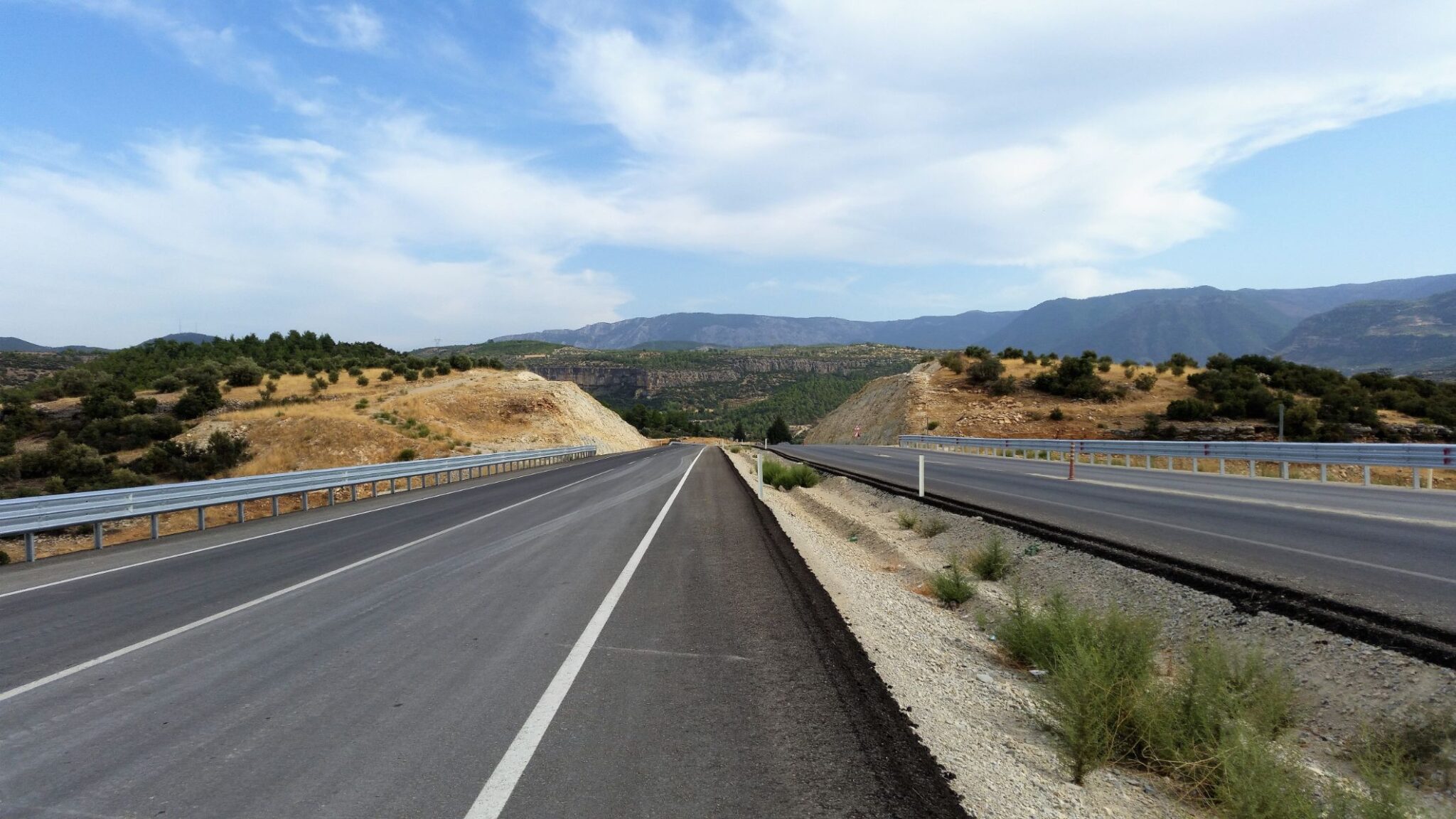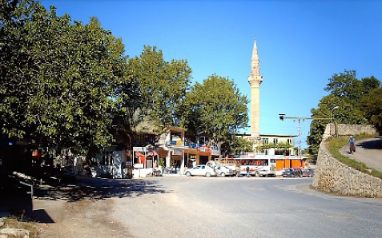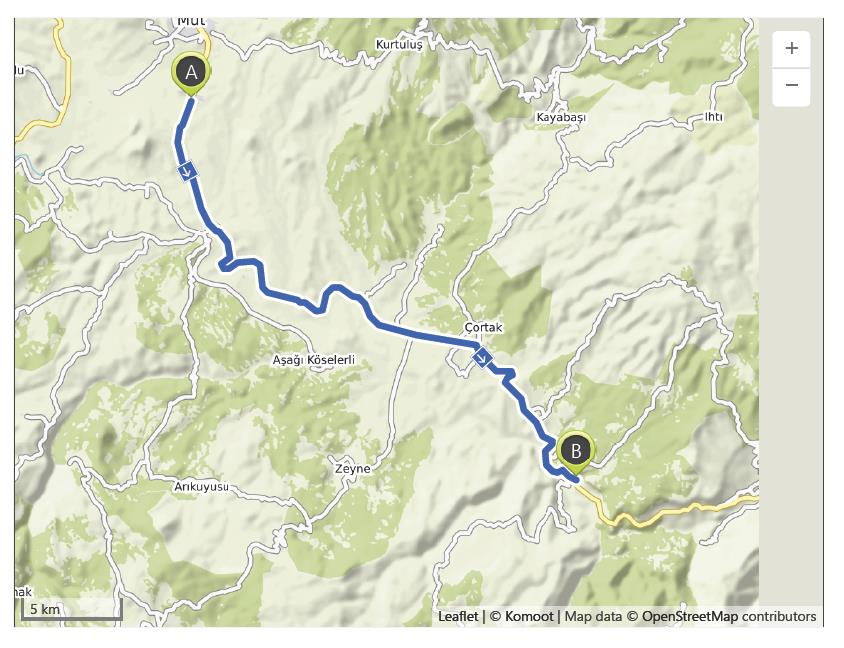Palantepe to Kargicak – 11th October
Distance: 35.1 km – Elevation +390 m -460 m
Weather: Sunny. Temperature: High 32 degrees
My plan for today was to walk to the village of Kargicak which at a distance of 35 kilometres was approximately midway between Mut and Silifke. If I couldn’t find a bed for the night I would catch a bus to Silifke and return to Kargicak to complete the walk tomorrow. I started walking around 6.00 am before daybreak, just in those moments when you begin to see the very faint beginning of the light of a new day. Goethe wrote: “the eye needs colour as much as it needs light.” and then just as those words came into thought, the sun began its rise above the sleeping mountains bringing with it such glorious beautiful colours of golds, reds, and crimsons blending effortlessly to produce a sky of such wonder. I was in awe and totally absorbed by the beauty of this wondrous creation.
I was walking through the wide flat plain of the lower Göksu river valley. The rich fertile soil together with the combination of a Mediterranean and continental climate create ideal conditions for fruit and vegetable growing. I passed by orchards of apricots, plums and figs, and groves of olives. The Mut region provides 75% of Turkey’s table apricots.
I had missed breakfast and was feeling decidedly peckish when I reached the village of Köselerli where I found a small roadside cafe just opening. I sat at an outside table and was met by the lady proprietor who had the most wonderful infectious smile, I said “kahvaltı?”. She turned and walked to the kitchen and returned a while later with a salad, which was followed by a cheese toasty and then a plate of peanut butter mixed with honey, and plenty of fresh bread. At this point, she came and joined me at the table and the usual conversation ensued, all the time with this wonderful smile, but she hadn’t finished feeding me, next up was a bowl of chicken soup. Her interest in my pilgrimage never waned, question after question, her teenage daughter joined us too. Time just flew by and an intended 20 minute stop turned into an hour. The cost for breakfast including copious amounts of tea was 20 Turkish lira, and on paying, she threw the note to the ground, exactly the same as the shopkeeper had done in Mut yesterday, and before I had time to think why? she gave me a warm hug to send me on my way, it was a special hour. (The gesture of the note throwing was confusing me, I had absolutely no idea of its meaning, were both the shopkeeper yesterday and the woman today upset with me? were they admonishing me for not having paid a sufficient sum?. It wasn’t until many weeks later that I learned more of what I now know to be a Turkish tradition. The note throwing occurs with the very first sale of the day, known in Turkey as “Siftah”, everything comes from the soil, so the note is being sown in order that it will grow into more money, more daily sales.)
A little after Köselerli I caught my first close sighting of the Göksu River, as the road and river came within metres of each other. The river flows for a distance of 260 kilometres and is formed from two rivers which rise in the Geyik mountains, the Gökdere (Hadim Göksuyu) and the Gökçay (Ermenek Göksu) which join in the village of Sucati near Mut. In antiquity, the river was called Calycadnus. It is fast-flowing and from Mut, until its confluence with its tributary, the Kurtsuyu river, it meanders through a rich fertile wide plain, after which it cuts its way through mountainous terrain forming spectacular deep canyons and gorges before reaching the Silifke delta and the Mediterranean sea. It would keep me company for the remainder of my journey to Silifke.
I was pleased to see cloud cover today, which helped to reduce the direct heat of the sun, but temperatures still rose to 30 degrees. Around 11.00 am I walked into the small farming village of Kemenli and saw a lot of activity around the village mosque, women stirring large cauldrons heated by fires below. I stopped to take a photo of the mosque and was invited, by a small group of men, to join them in the grounds of the mosque, where we sat at tables in a shaded seating area. One of the men spoke to the women stirring the cauldrons and returned with what appeared to be a bowl of soup. It was in fact Aşure, an incredibly sweet dessert porridge, and I was told it would give me energy!. It was Friday, the holiest day of the week in Islam, and the Aşure was being prepared for the whole village. The dried fruit ingredients were being prepared by a group of women sitting on the floor near the cauldrons and after the dessert, I was given a plate of dried apricots and pomegranate seeds. I remember as a boy, pomegranates being a treat once a year at Christmas. Aşure is also known as Noah’s pudding. Turkish legend says that Noah created the very first Aşure from the scraps left after he began to run out of food, and he threw bits of everything into one pot. The resulting dish was delicious and kept everyone well fed until the ark came to rest on Mount Ararat in eastern Turkey. It is claimed Aşure is the oldest dessert in the world. Traditionally, Aşure is made in large quantities and given to everyone, irrespective of the recipient’s religion or belief, as an offering of peace and love. One of the men who welcomed me was well educated and was a teacher, he spoke excellent English and we had a good discussion about the differences between Islam and Christianity.
Refreshed and invigorated by the Aşure I continued on, passing more orchards of apricots, terraced olive groves, and small plantations of pomegranates and figs. I had my daily stop by the police, all very friendly and polite, and later I stopped at a tea house in the village of Kurtsuyu where I was welcomed by the village elders. Kurtsuyu is where the Kurtsuyu river joins the Göksu river and where the river leaves the wide plains to cut its way through the mountainous terrain and not long after, I came to the village of Evkafçiftliği where I caught my first sighting of the spectacular deep canyons created by the river as it cut its way through the mountains.
I arrived in Kargicak at 5.00 pm and as expected there was nowhere to sleep but I had time to eat a small meal in the village restaurant before the last bus to Silifke left at 5.30 pm. The bus took an interesting route through various villages and I arrived in Silifke at 6.30 pm after another special day in the Taurus mountains.
